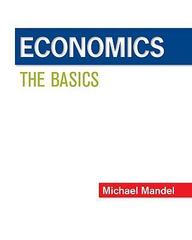Give opinion: Managers must make critical economic decisions every day, such as whether to make or buy their products, if they should take or leave an offer on the table, or between different projects to determine which is more profitable. Contribution analysis is a cost-benefit method of decision making that evaluates the financial contribution of each decision to an organization's profit and overhead (after covering the variable costs involved) by estimating the incremental costs and revenues involved, performed with the goal of profit-maximization. When deciding the overall contribution of each potential choice, it is crucial to consider all of the costs and revenues involved (but only those that vary as a result of the decision). Therefore, contribution analysis ignores fixed overhead costs since managers are only concerned if the decision increases profit (or not) and by how much. Then, a sensitivity analysis of the resulting conclusion can measure how much the overhead could change without altering the decision made (Douglas, 2012).
Determine the category of financial benefits or costs for each scenario given in the following table. The category available: tangible benefit, intangible benefit. one-time-cost, and recurring cost. Reminder: Please separate each answer into a different line and include relevant label in front of your answer Example: a. Intangible benefit b. Intangible benefit C. Intangible benefit d. Intangible benefit No. Scenario Category Example Increased organizational flexibility Intangible benefit A. New hardware and software purchases b. Application software maintenance C. Cost and error reduction d. Faster decision makingWrite 9 Sentences For Your Response: What are the four basic essential elements necessary in valid contract? What is consideration? The following list briefly describes the four requirements that must be met for a valid contract to exist. If any of these elements is lacking, no contract will have been formed. 1. Agreement. An agreement to form a contract includes an offer and an acceptance. One party must offer to enter into a legal agreement, and another party must accept the terms of the offer. 2. Consideration. Any promises made by the parties must be supported by legally sufficient and bargained-for consideration (something of value received or promised to convince a person to make a deal). 3. Contractual capacity. Both parties entering into the contract must have the contractual capacity to do so. The law must recognize them as possessing characteristics that qualify them as competent parties. 4. Legality. The contract's purpose must be to accomplish some goal that is legal and not against public policy. Even if all of the requirements for a valid contract are satisfied, a contract may be unenforce- able if the following requirements are not met. 1. Voluntary consent. The consent of both parties must be voluntary. For instance, if a contract was formed as a result of fraud, mistake, or duress (coercion), the contract may not be enforceable. 2. Form. The contract must be in whatever form the law requires. Some contracts must be in writing to be enforceable. These requirements typically are raised as defenses to the enforceability of an otherwise valid contract.Utilitarianism is: A theory from moral philosophy that argues that an act is right if it serves to maximize the attainment of human satisfaction. OA theory from moral philosophy that argues that profit and financial well-being are important parts of evaluating an ethical situation and should not be ignored or dismissed. A theory from moral philosophy that argues that we should always choose the action that will best benefit us as individuals Question 4 2.5 pts The author, Kelman, analyzes cost-benefit analysis through the lens of ethical theory. He argues for three conclusions. Which of the following IS NOT one of Kelman's conclusions? O In areas of environmental, safety. and health regulation, there may be many instances where a certain decision might be right even though its benefits do not outweigh its costs. Of Given the reasons why it is problematic to monetize non-marketed benefits or costs that is a prerequisite for cost-benefit analysis, it is not justifiable to devote major resources to the generation of data for cost-benefit calculations or to undertake efforts to further promote cost-benefit analysis. Getting decision-makers to make more use of cost-benght techniques is important enough to warrant both the expense required to gather the data for improved cost-benefit estimation and the political efforts needed to give the activity higher priority compared to other activities, (): There are good reasons to oppose efforts to put dollar values on on-marketed benefits and costs,QUESTION 12 Ordering decision making process for managers - T Follow up Identify problem Analyze the allomativos Implement the decision Determine alternative courses of action Select the best alternative QUESTION 13 What is correct explanation about first step for analzing the alternatives in decision making process? 8. Select an appropriate, measurable criterion O b. Carry out the chosen analysis * Select a method of analysis " Determine alternative courses of action










